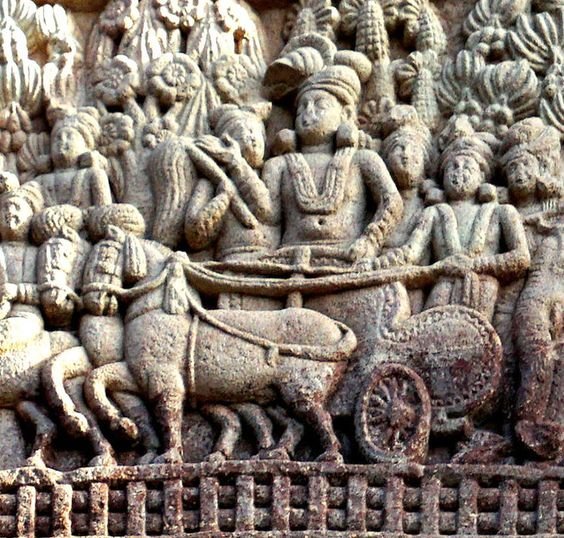Chandragupta Maurya – The Warrior King of Indian Subcontinent
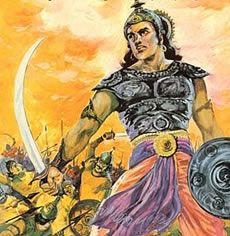
Chandragupta Maurya also known as Sandrokyptos, Sandrokottos, Androcottus by the Greeks and Latins, founded the mighty Mauryan Empire around 321 BC. This was the first biggest empire that consolidated most part of the Indian subcontinent into a single political unit.
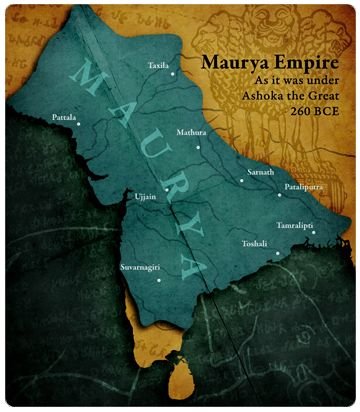
Around the year 323 BC, in an alms-giving ceremony of Dhana Nanda, the emperor of Nanda Dynasty, Chanakya (aka Kautilya & Vishnugupta) was humiliated for his appearance and commanded that he be expelled from the gathering. Chanakya escaped his arrest and fled the scene. To avenge this ignominy, Chanakya decided to overthrow Dhana Nanda and the entire dynasty altogether. He narrowed down to Pabbata and Chandragupta for this. (Pabbata was the son of the king). To arrive at the most fitting candidate he gave them multiple tests. As part of a test, he gave each of them an amulet to be tied hugging their necks with a woollen string.

At an opportune occasion, Kautilya decided to put the test into action. While Chandragupta was in a deep slumber, Chanakya asked Pabbata to retrieve the woollen thread without damaging it or disrupting Chandragupta’s sleep. Pabbata after thinking of different possibilities was unable to find a way out and eventually gave up the task. Some days later, Chandragupta was given the same challenge while Pabbata was asleep. Chandragupta was convinced of the only way that he could accomplish the task is by chopping Pabbata’s head off, and he did it without a second thought. Completing the task successfully, he gave the blood-soaked thread to Chanakya leaving him speechless. Astounded by the determination and ruthlessness of Chandragupta, and also left with the only candidate, Chanakya toned him for the next 7 years into a warrior ruler.
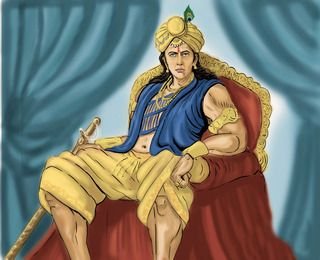
Mudrarakshasa, a Sanskrit play written by Vishakadatta describes the expedition of Chandragupta Maurya in overthrowing the Nanda Dynasty. In the ensuing decade long guerrilla warfare, Chandragupta was successful in defeating the Nandas and established the Mauryan Dynasty. The battle was hard won for the fact that when Alexander invaded India around 325 BC, he gave up the idea of proceeding further east for the fear of the Nandas.
Chandragupta married Durdhara, as much like Chandragupta’s lineage we do not have clear evidence about Durdhara except from the accounts of Jaina text Parishishtaparvan of Hemachandra, that she was the mother of Bindusara. Much later after the death of Durdhara, he married a Greek girl Helena, the daughter of Seleukos Nikatos. Although he had a son (possibly named Justin) with her as mentioned in the indica, nothing else was documented about him.
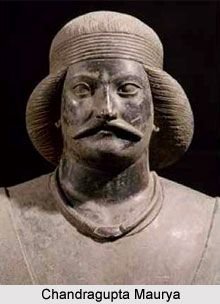
Kingdom
The kingdom was organised according to the Arthashastra’s Saptanga theory of state i.e., there were 7 elements of a state namely the Swami (the King), Amatya (ministers), Janapada (people and the territory), Durga (fortification), Kosha (treasury), Danda (army) and Mitra (allies).
Chandragupta was assisted by a council of members noted for their wisdom. The king was referred to as Dharmapravartaka, meaning, he is the one who promulgates social order and maintains dharma. The primary responsibilities of the King were to supress crimes, uphold societal harmony, and ensure the safety and well-being of the people. It is famously quoted “In the happiness of his subjects lies the king’s happiness, in their welfare lays his welfare”
Bureaucrats were extensively appointed to manage the vast spheres of the empire effectively. There were separate departments for road, irrigation, census, hospital etc. and to fund all these, taxes were collected. An extensive espionage system was put in place to organise and keep together the empire. Hence the state controlled all enterprises, including the agriculture, trade etc. and private property was banned. Huge army was maintained which included naval forces as well to guard the trade carried through waterways. Much about the empire was known from Megasthenes’ indica which described the Mauryan polity and society and served as an important record of history.
Wars
India’s interaction with the Greeks began with the invasion of north-western India by Alexander around 327 BC. After he conquered the Punjab region, he decided to leave these territories under his governors before moving back to the west. This was capitalised by Chandragupta Maurya and he prioritized his early military expeditions against these foreign intruders.
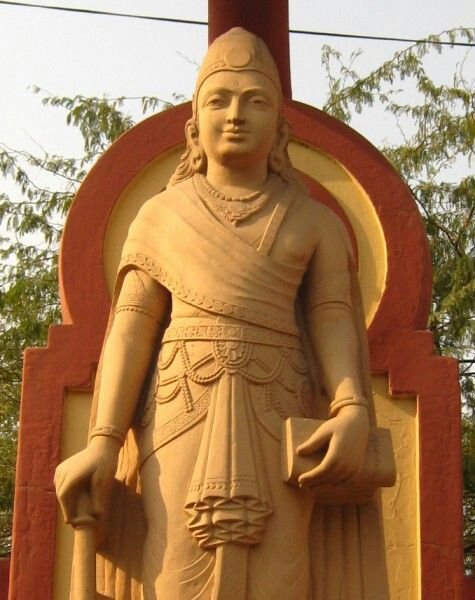
Seleucus Nicator was one of Alexander’s General who ruled a vast territory from Turkey to the west of river Indus. Around 305 BC, Chandragupta waged war against Seleucus and defeated him. At the end of the war, Chandragupta made a peace treaty with Seleucus. As a part of this treaty, Seleucus got his daughter married off to Chandragupta and his envoy Megasthenes was sent to Pataliputra as the first Greek ambassador. In return, 500 war elephants were offered to Seleucus. However, the territories of Seleucus i.e., the areas west of Indus including the Kabul, Kandahar, Taxila and Gandhara was annexed into the Empire. By the end of Chandragupta’s rule, almost the entire Indian subcontinent except for Tamil Nadu, Kerala, and Odisha came under his Empire that spanned from present day Bangladesh to Afghanistan.
Conclusion
Chanakya known for his extreme care and attention to Chandragupta, began introducing traces of poison into the latter’s food in order to develop his resistance against it. He did this for the fear that the emperor might get poisoned by his foes. While his wife Durdhara was carrying their first son, Chandragupta gave some of his food to her without his knowledge about the poison. Getting to know about this, Chanakya quickly intervened and an emergency surgery was performed. Unfortunately, Durdhara passed away but the baby survived. The poison however left a mark on the forehead of the infant and from this he got the name Bindusara.
After ruling for 24 years, about 297 BC Chandragupta during his old age embraced Jainism and renounced his throne to make his son Bindusara the next ruler. Thereafter he became a disciple of the Jaina monk Bhadrabahu and spent the last lap of his life at Sharavanbelgola. He is believed to have practiced Santhara which is a voluntary fasting unto death amongst Jaina monks and a revered spiritual practice to achieve liberation from rebirth. Despite the illustrious history of Chandragupta Maurya, not much is known about his lineage. Different sources mention differently; for instance, Vishnupurana mentions him as the son of one of the wives of a Nanda King, while Mudrarakshasa identifies him as shudra and Buddhist chronicles describe him as kshatriya. Ambiguities aside, Chandragupta’s legacy as a conqueror, statesman, and cultural patron has had a lasting impact on Indian history and continues to be studied and celebrated to this day.
